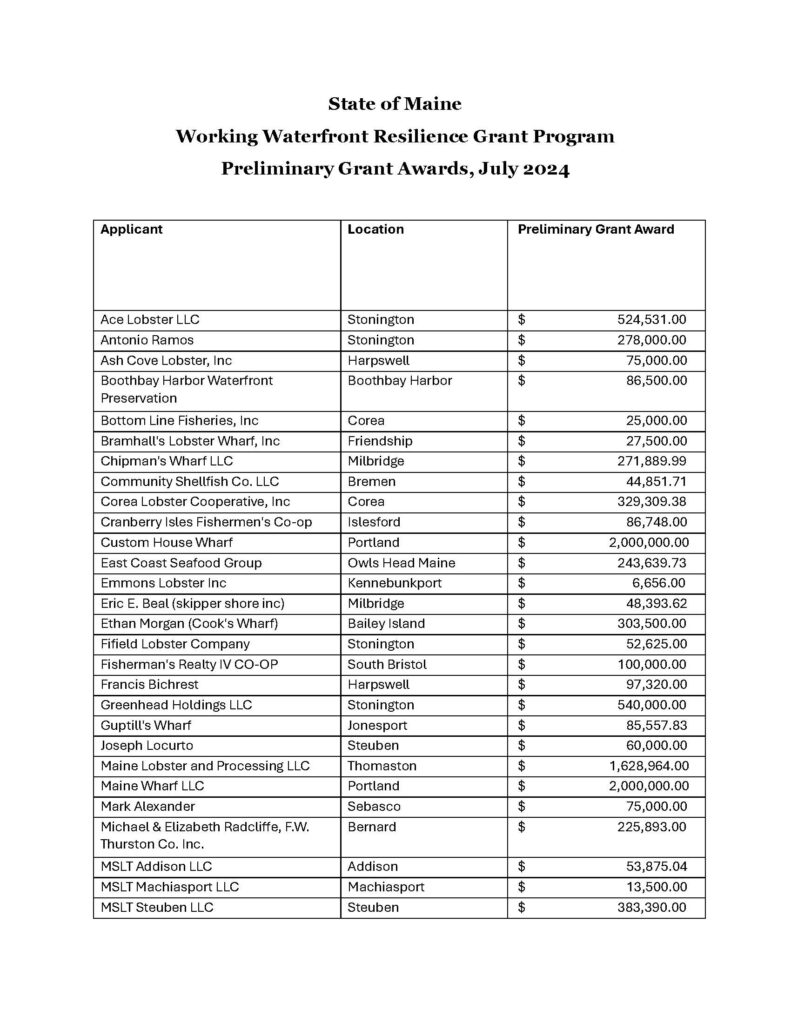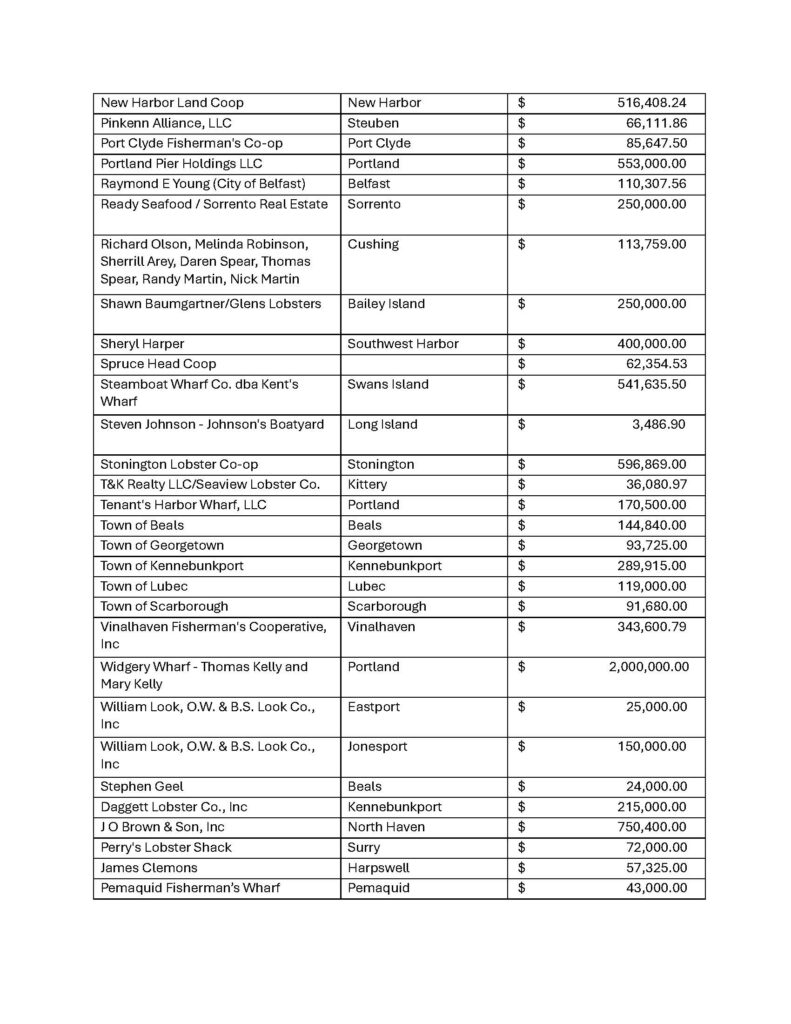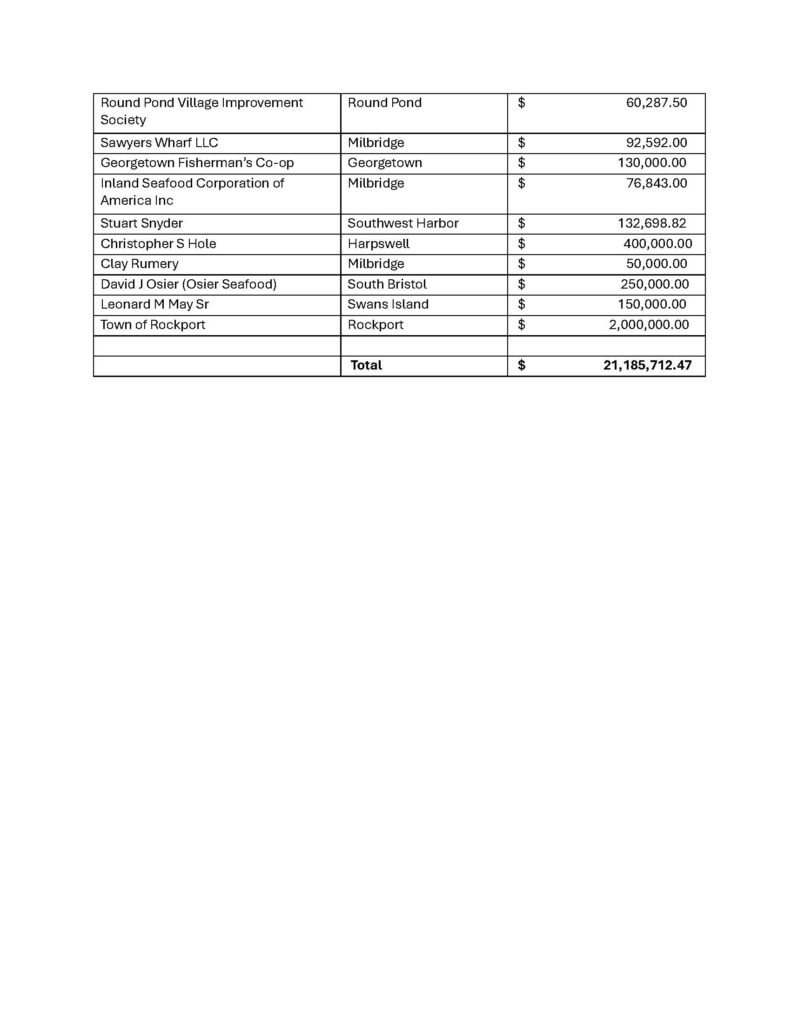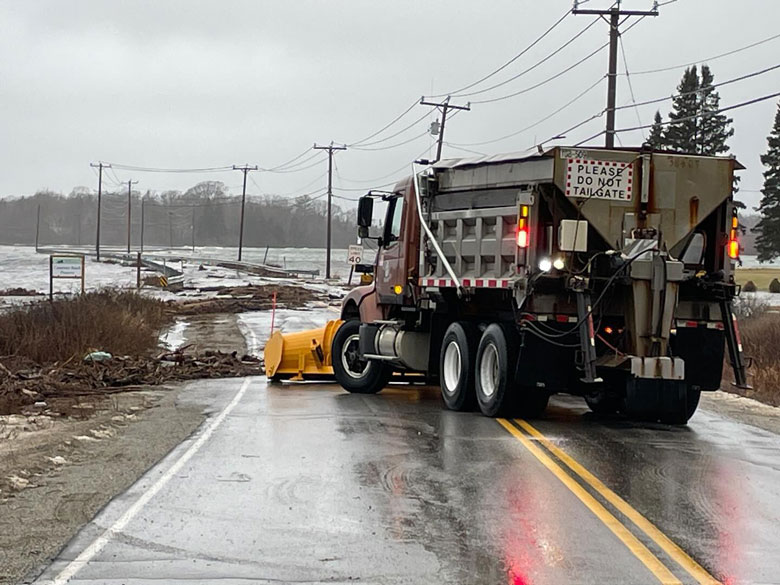Sixty-eight Maine working waterfronts will receive $21.2 million in resilience grants from the state to support recovery and rebuilding from damage caused by devastating storms this past winter.
The Working Waterfront Resilience Grant Program is funded with $60 million in state funding authorized through the supplemental budget in May— the single largest investment in storm recovery by any administration in Maine history.
The working waterfront projects receiving grants represent a range of needs, including reconstruction and improvement of damaged wharves and piers, rebuilding and restoration of key support buildings such as bait sheds, and repairing and upgrading fuel and electrical systems.
“Working waterfronts are a cornerstone of our coastal communities and our economy, and last winter’s devastating storm demonstrated just how vulnerable they are to extreme weather and climate change,” said Gov. Janet Mills.
“These grants will help rebuild working waterfronts to better withstand storms, protecting access to the water now and for generations to come.”
Marine Resources Commissioner Patrick Keliher said the funding is “an important investment in Maine’s critical yet vulnerable working waterfront. With commercial access already so limited, it is imperative that we protect these properties from climate driven events and safeguard an industry that is so important to our state’s economic future.”
Hannah Pingree, director of the Governor’s Office of Policy Innovation and the Future and co-chair of the Maine Climate Council, said the storms were “a wake-up call for many across our state to the need to urgently invest in resilience to the growing effects of climate change, such as flooding, storm surge, and intense, extreme storms.”
Linda Vannah, manager of the New Harbor Co-op, said the funding “is critical for us, because we had to replace both docks after the storms destroyed pilings, snapped fuel lines, left our office building with no support structure, and damaged electrical wiring and our freezer.”
The money will help rebuild the docks higher by up to two feet.
“Without this funding we wouldn’t be able to complete the reconstruction of our wharf,” said Ron Trundy, manager of the Stonington Co-op. “We were able to start the process so we could return to work by June, but this funding lets us complete the work by reinforcing the base of the wharf with stonework and increasing the height of the wharf by two feet, which will make the co-op resilient to future storms.”
Island Institute and the Maine Coast Fishermen’s Association also dedicated resources to help property owners complete and submit grant applications.
The program enabled grant applicants to request up to $2 million for design, permitting, and construction of their project; applicants were also required to provide a 1-to-1 financial match toward the cost of the work.
In addition to the Working Waterfront Resilience Grant Program, the governor and legislature allocated $35 million to two other funds for storm recovery: the $10 million Business Recovery and Resilience Fund, to provide direct support to businesses harmed by the winter storms, and $25 million for the Maine Infrastructure Adaptation Fund, for projects that make public infrastructure more resilient to storms and flooding.
In May, Mills signed an executive order to establish a commission to develop the state’s first plan for long-term infrastructure resilience, following the two devastating winter storms and a record eight storm-related federal disaster declarations in Maine over the past two years.
The 24-member commission will engage with communities, industries, and organizations across Maine to understand challenges following storms, identify and bridge gaps in resources like funding, financing, and insurance, how to improve the resilience of energy systems, propose new approaches to improve disaster recovery and response, and strengthen resilience supports at the state, regional, and local levels.








